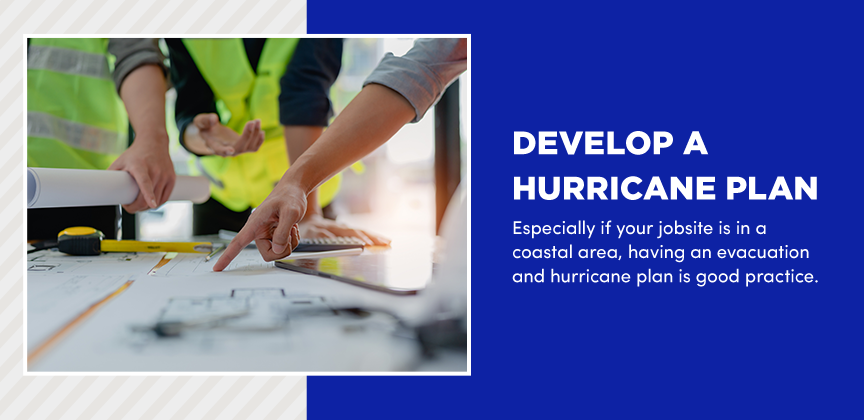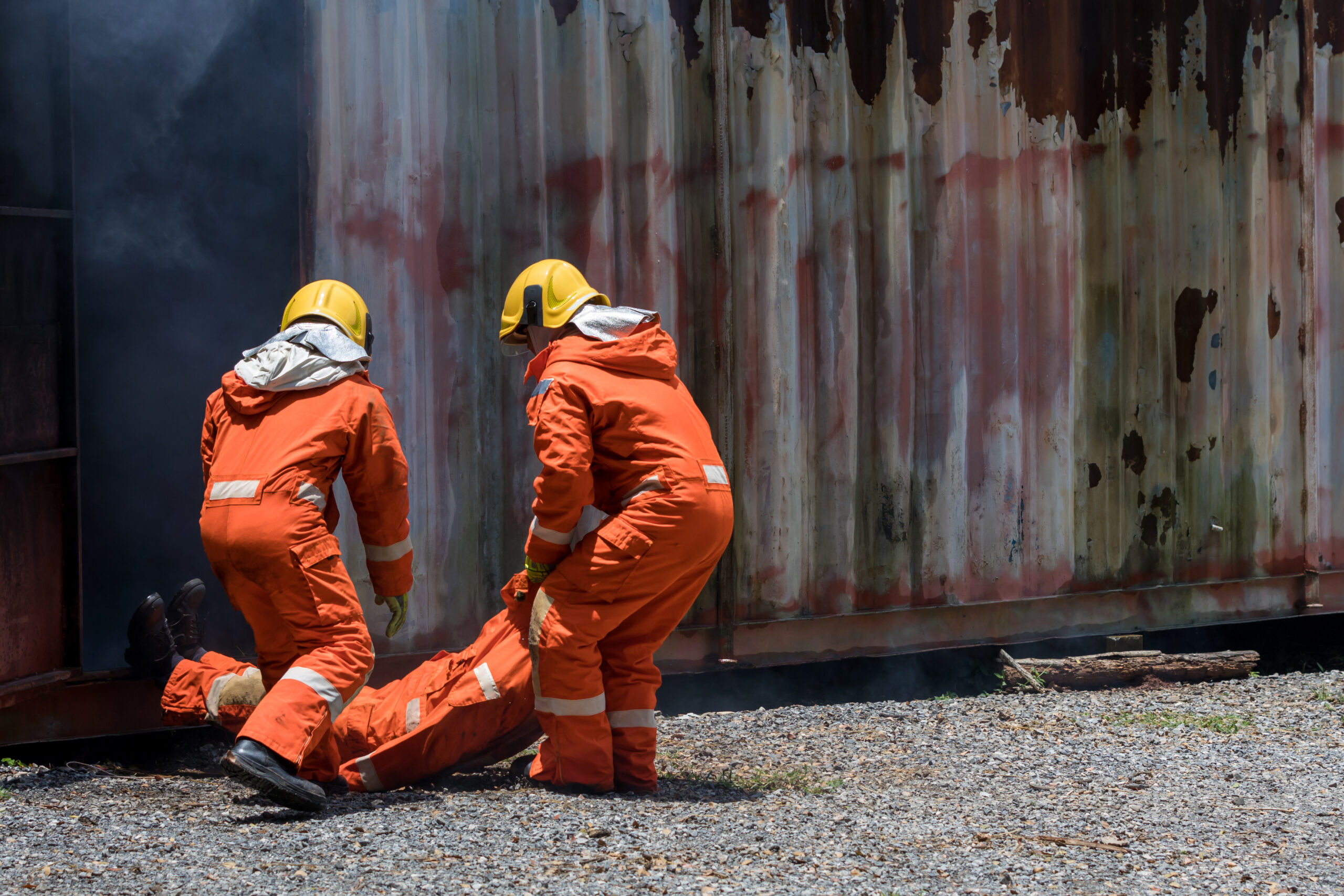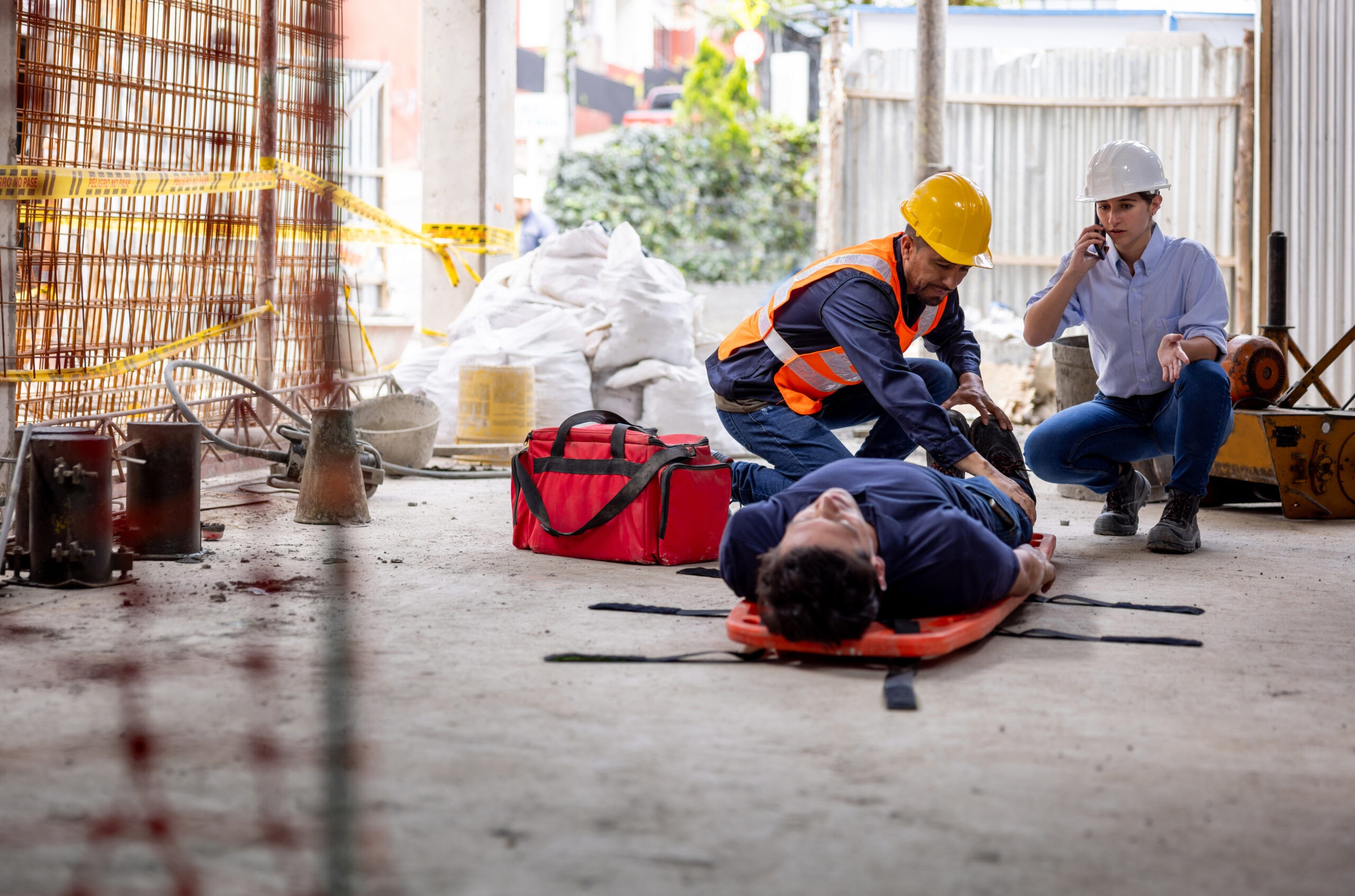Severe Weather Preparedness for the Jobsite

Construction workers can find themselves at risk when severe weather strikes. The National Association of Safety Professionals (NASP) recognizes the importance of implementing safety measures to prevent accidents. This article examines severe weather impacts on jobsites and the practical methods construction managers can use to protect workers.
Dangers of Severe Weather on the Jobsite
In the U.S., weather emergencies such as floods and hurricanes cause billions of dollars worth of damage every year. There were 27 climate or weather disasters in 2024, each exceeding $1 billion in damages. Construction sites are vulnerable to damage due to their outdoor location and the presence of heavy equipment, loose materials, and temporary structures.
Construction sites are greatly affected by severe weather hazards:
- Hail can injure construction workers and damage equipment.
- Extreme heat or cold spells can cause weather-related illnesses.
- Lightning strikes that are particularly dangerous for workers on cranes or scaffolding.
- Strong winds blow debris and compromise the strength of any temporary structures.
- Ice and snow can cause workers to slip or fall.
- Heavy rain causes slippery walkways and potential flooding.
Inclement Weather Preparedness in Construction Guidelines
The Occupational Safety and Health Administration (OSHA) instructs employers to keep workspaces “free from recognized hazards” in its General Duty Clause. Here is a breakdown of the key points and specific OSHA guidance:
- High winds and tornadoes: The Tornado Preparedness and Response guidance includes key components for employers, such as proper training, alert systems, and shelters. In these circumstances, bypass exterior walls and corners, and ensure workers understand the warning signs. OSHA guidance also outlines potential safety hazards in the aftermath of a tornado, including electrical hazards and flying objects, and advises on safety precautions during recovery.
- Extreme heat: Physical activities such as carrying heavy materials and using outdoor equipment in high temperatures are especially challenging for construction workers. These conditions are uncomfortable to work in and, in intense circumstances, may even cause death. OSHA’s Heat Stress Guide offers key guidance to keep workers safe and comfortable in high temperatures. Main points include keeping hydrated, wearing appropriate clothing, and monitoring signs of heatstroke.
- Cold winter weather: To keep construction workers safe in freezing winter weather, employers must provide appropriate training and secure work environments. The Winter Weather Preparedness guidance from OSHA highlights the importance of safety issues particularly relevant to construction, including taking extra care with ladders and scaffolding, properly deicing materials and equipment before use, and paying close attention to handling machinery in cold weather.
- Flooding: When flooding occurs, low-lying areas and open trenches on jobsites are targets. Floods can develop quickly, and significant safety hazards, such as drowning, electrical hazards, and carbon monoxide poisoning, are possible. On jobsites, check spaces like trenches for a risk of collapse and water accumulation. Securely store chemicals and fuel products away to limit the risk of leaks, and electrical tools can be stored at higher levels.
- Hurricanes: Construction workers who work in coastal areas or places with frequent storms must prepare for a potential hurricane. The Hurricane Preparedness and Response guidance explains how workplaces, including jobsites, should be evacuated when a storm occurs. Keep updated with the progress of a hurricane and make necessary arrangements to protect yourself and your equipment. For example, clear away loose building materials, and secure scaffolding and partially built structures.
- Lightning: With the National Oceanic and Atmospheric Administration (NOAA), OSHA provides comprehensive guidance on lightning safety when working outdoors. In the U.S., 300 people are struck by lightning every year, and an estimated 50 people have died in the last 30 years. Lightning is especially dangerous for outdoor construction workers operating electric tools, cranes, and scaffolding. Seek shelter indoors when lightning strikes and remain inside for 30 minutes after you have heard the last thunder sound.
Top Tips on Preparing for Severe Weather on the Jobsite
Safety should always be your top priority on the jobsite. Below is a list of top tips to keep you and your crew safe in severe weather and emergencies:
Secure Your Materials and Equipment
Before harsh weather hits your jobsite, remove loose building materials and secure equipment, such as wooden planks, tarps, and generators. This will minimize the risk of damage to the jobsite and the community. Ensure you have a checklist of actions to take before a severe weather event. Any material or machinery left outside may cause injury, particularly during high winds.
Maintain Clear Communication
You and your crew must constantly communicate to determine the best course of action during severe weather events. In addition to using your cell phones for calls and text alerts, explore other viable options. Radios, alert sirens, and visual warning signs help facilitate evacuations and shut down jobsites in emergencies. If a jobsite is closed due to bad weather, inform workers immediately.
Develop a Hurricane Plan
Especially if your jobsite is in a coastal area, having an evacuation and hurricane plan is good practice. The best place to start is by preparing in advance, such as securing equipment and ensuring all team members are aware of the plan. Keep a close eye on the hurricane’s development, and make a printed copy of the evacuation plan available for all workers to memorize.
The plan should include emergency contact information for all construction workers and procedures to follow in case of structural damage or chemical spills. A list of vendors who can provide recovery supplies and services is also helpful.

Prepare for Temperature Extremes
Construction work requires us to prepare for all temperatures. In the height of summer, OSHA recommends hydrating every 15 minutes and taking breaks in cool, shaded spots. Conversely, working in freezing temperatures means wearing loose clothing in at least three layers. Wearing waterproof and insulated work boots, thermal gloves, and hats is a good idea.
Keep Emergency Supplies Available
To maintain jobsite safety in inclement weather and emergencies, ensure your crew can access essentials like a first-aid kit. Include food, water, batteries, flashlights, back up generators, and emergency radios. It may seem drastic, but access to these tools will significantly help out during potential emergencies.
Conduct a Post-Weather Analysis
Once an extreme weather situation has passed, carrying out a post-event risk assessment is good practice. Analysis helps you identify any damage caused and determine whether there are electrical safety issues or hazardous areas that may cause injury. Lead a walk-through session with your crew and discuss any improvements.
Teach Severe Weather Preparedness in Construction
Consider practice safety drills after severe weather to prepare for the future. Run-throughs help construction workers recognize signs of danger and increase awareness of what to do in these situations. Remind your crew that communication is key, too. Share best practices for severe weather preparedness, and be open to questions if your crew needs further guidance.
Become a Certified Safety Manager With NASP
Building a safe environment on the jobsite is essential, but not always easy. There is a lot to consider to ensure your jobsite is current on the protocols and your workers stay compliant. NASP’s Certified Safety Manager: Construction (CSMC) course teaches the practical approach to workplace safety and the leadership abilities and knowledge you need to manage programs on construction safety.
In this course, you will learn key skills, including how to:
- Analyze and document jobsite accidents and investigate root causes.
- Create safety programs to train your team.
- Discover OSHA-required and primary workplace topics.
- Conduct audits and jobsite safety in severe weather inspections.
- Document and analyze workplace hazards properly.
- Explore criminal and civil liability issues for injuries and accidents.
Once you enroll, you have six months to finish, and the average completion time is 40 hours. Sign up for the CSMC program today and train to become a dependable construction safety leader.

Blog Posts
Latest Posts
Related Posts




